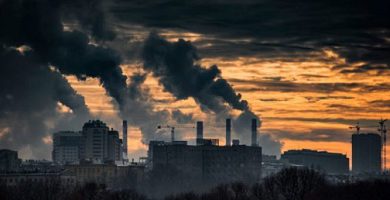What is the deciduous forest?
We explain what the deciduous forest is, where it is found, its flora, fauna and climate. Also, what factors can destroy it.
-
What is the deciduous forest?
Temperate deciduous forests or simply deciduous forests, also known as aestisilva or estisilva, are those forests located in the temperate region of the planet . They are composed of plant species that lose their leaves during the fall , in order to survive the winter and sprout during the spring .
From there comes its name: caducifolio , Latin caducus , “fall” and folium , “leaf”, as opposed to evergreen or evergreen. This mechanism is nothing more than a biological adaptation that allows trees to maintain their stable water levels , since the loss of leaves prevents them from perspiration.
However, the fall of the leaves also has the effect of providing organic matter to the soil and increasing its fertility margins, so these forests are usually found on very nutrient-rich soils.
-
Location of deciduous forests
Deciduous forests are distributed in different locations in both hemispheres of the planet. The relief in which they usually appear is diverse, both plain and mountainous .
They are found in much of Europe (western, central and eastern), western Asia, the east coast of North America and fringes of southern Chile and southeast Australia .
-
Deciduous Forest Flora

The species typical of deciduous forest usually trees wide flat sheet , such as oak, birch, beech, poplar, elm , and maple. Its slender and vaulted glasses usually go up 30 meters with ease, with hard, smooth and brown crusts.
In the undergrowth are smaller plant species , such as lichen, moss, ferns, wild flowers and other small plants, with an average level of bushes of various types.
-
Deciduous Forest Fauna

Like plants, deciduous forest animals are adapted to changing weather and marked seasons. Before the arrival of the cold, some species resort to defense mechanisms such as:
- Hibernation . It consists of isolation in its burrow waiting for spring to arrive.
- Migration . The massive movement towards warmer areas to return when the cold has passed.
Likewise, the animals of the deciduous forest are distributed along the strata of the vegetation , being able to stay in the undergrowth or at the top of the branches for entire periods.
Thus, while the fallen wood provides shelter to salamanders, toads and other amphibians , migratory birds such as geese, woodpeckers, raptors, hawks, collumbids, strigiforms and pheasants remain high.
The reptiles are less common in this forest during the cold season, however raccoons, cattle, goats, porcupines, cats, dogs and beavers are frequent. There is a good representation of snakes, too.
-
Climate of the deciduous forest

They are typical of the humid continental climate, as well as the maritime climate in Western Europe. Average temperatures are always recorded above 0 ° C, abundant rains and well distributed throughout the year, without periods of aridity that impair the development of plants.
On the contrary, there is an excess of water that the soil is not able to absorb and floods the low areas. This climate has its four seasons very well defined , with very well differentiated biological activity.
-
Destruction of the deciduous forest
The regions of the deciduous forest have a high interest for human colonization, given their fertile soil and valuable wood. Consequently, indiscriminate logging and land reform have reduced entire forests to virtually nothing over the decades.
Trying to repair the damage done, there are programs for the reinsertion of fauna and restoration of the deciduous forest in Europe, the United States and other regions.




